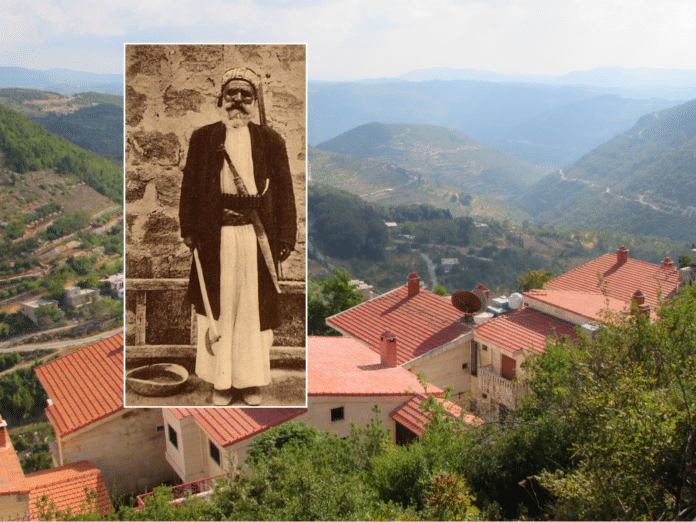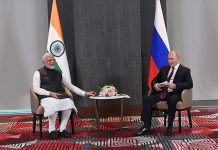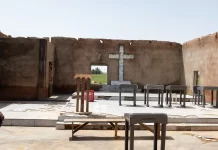The sudden fall of the Assad regime may mean the final nail in the coffin for Syria’s borders as they have existed since the Sykes-Picot Agreement of 1916. An Alawite state may be in the offing.
The Syrian Civil War has fundamentally reshaped the country’s geopolitical landscape, creating conditions for fragmentation and the emergence of new power centers. Among the most compelling scenarios is the establishment of an “Alawite State” in the coastal region west of the Alawite Mountains, a development with profound regional and international implications.
Geographical and Strategic Significance of the Alawite Mountains
The Alawite Mountains, also known as the Ansariyah Range, stretch parallel to the Mediterranean coast, forming a natural barrier between the coastal strip and Syria’s interior. With an average elevation of 1,200 meters, peaking at over 1,500 meters, this rugged terrain is not impenetrable but significantly hampers any advancing force, offering natural defensive advantages. Military strategist Carl von Clausewitz’s principle of “defense as the stronger form of war” applies well to this region, where geography amplifies defensive capabilities.
The coastal cities of Latakia, Tartus, and Baniyas lie west of these mountains, forming a compact region with a distinct demographic composition. Covering an area of approximately 8,000–10,000 square kilometers and housing a population of 3–4 million, the region is predominantly Alawite (60–70%), with Christian, Druze, and Sunni minorities. Given the historical and ongoing sectarian violence in Syria, it is plausible that Christians, who face existential threats in Sunni-dominated areas, might gravitate toward such a state.
This area’s geographical advantages include its defensibility, access to the Mediterranean, and relative self-sufficiency in water resources—factors critical for any nascent state’s sustainability.
Historical Precedents and Comparative Models
History offers valuable lessons on the emergence of states rooted in ethnic or sectarian identities. For example:
Taiwan:
Following the Chinese Civil War, Chiang Kai-shek’s retreat to Taiwan established a de facto independent state, sustained by U.S. support and geographic isolation. Similarly, an Alawite state could leverage external alliances and its coastal isolation.
Abkhazia:
Breaking away from Georgia with Russian support, Abkhazia underscores the role of great-power patronage in the survival of small, contested states.
1920s Alawite State:
Under the French Mandate, an Alawite State centered on Latakia briefly existed but lacked the infrastructure, organization, and international backing necessary for permanence.
Each of these examples highlights the critical role of external support and geographic defensibility in state survival.
The Role of Regional and Global Powers
An Alawite state would recalibrate the Middle East’s geopolitical dynamics, attracting the interest of major and regional powers.
Russia factor
Russia’s naval facility in Tartus underscores its strategic stake in this region. A permanent Alawite state could cement Russia’s presence in the Eastern Mediterranean. By granting Russia an enclave-like territory akin to Kaliningrad in Europe, such a state could ensure Moscow’s enduring support.
Iran and the most possible future scenario
While Iran’s sectarian ties to the Alawite community suggest alignment, logistical challenges—such as geographic isolation and diminished access through Iraq—could complicate Tehran’s influence. Over time, Iran’s role may wane as other powers, like Russia or China, fill the vacuum.
China.
China’s Belt and Road Initiative might see an Alawite state as a strategic foothold in the Mediterranean. However, without broader connectivity to hinterlands, such a state could remain a limited asset in China’s regional calculus.
Israel and the West
From Israel’s perspective, an Alawite state could serve as a buffer against Sunni jihadist groups. However, should such a state align too closely with Iran or Russia, it might become a source of concern. The West, particularly the United States, might pragmatically engage with an Alawite state to counterbalance radical Sunni factions and preserve regional stability.
Challenges and Opportunities for an Alawite State
Defensive Strengths
The Alawite Mountains’ defensible geography offers significant military advantages. Lessons from Afghanistan in the 1980s demonstrate the strategic difficulty of overcoming well-defended mountainous terrain. For groups like Hay’at Tahrir al-Sham (HTS), lacking significant airpower, breaking through such defenses would likely be a protracted and costly endeavor.
Economic Viability
The economic sustainability of an Alawite state poses significant challenges. While the region’s access to the Mediterranean offers potential for trade, the lack of natural resources and reliance on external support could hinder long-term viability. Cooperation with regional actors like Egypt or even indirect engagement with Western powers might be necessary to sustain economic functionality.
Sectarian and Social Dynamics
Uniting the Alawite population under a cohesive political structure is crucial. A secular, inclusive governance model, resembling pre-2000 Turkey, could attract minority groups like Christians and Druze, bolstering internal stability. Conversely, failure to achieve this unity could render the state vulnerable to internal divisions.
Asssad’s Strategic Calculations
For President Bashar al-Assad, retreating to the Alawite heartland offers a pragmatic contingency plan. Maintaining the title of “President of the Syrian Arab Republic” would preserve symbolic national unity, even as de facto governance consolidates around the Alawite enclave.
Key Steps for Consolidation
1) Military Fortification:
Strengthening defensive positions in the Alawite Mountains to withstand prolonged insurgent attacks.
2) Diplomatic Engagement:
Securing recognition or tacit acceptance from key players like Russia, China, and potentially Egypt, which could mediate with Western powers.
3) Economic Strategy:
Leveraging coastal access for trade and seeking investments or aid from allies.
4) Population Integration:
Encouraging migration of threatened minorities to solidify the state’s demographic base.
Future Scenarios and Implications
Regional Stability
An Alawite state could act as a buffer against Sunni jihadist factions, stabilizing parts of the Eastern Mediterranean. However, it might also exacerbate sectarian tensions, particularly with Sunni-majority areas.
Great Power Competition
The involvement of Russia, China, and the West would likely position an Alawite state as a focal point in broader geopolitical rivalries. Its alignment—whether with Russia and Iran or pivoting toward the West—would significantly influence regional power dynamics.
Conclusion
The establishment of an Alawite state remains a speculative yet plausible outcome of Syria’s protracted civil war. Rooted in the defensible geography of the Alawite Mountains and the Mediterranean coast, such a state would depend heavily on external support and strategic diplomacy for survival. While offering potential stability to a fragmented Syria, it also risks becoming a flashpoint in the broader geopolitical contest for the Middle East.
As Machiavelli observed, “War is just when it is necessary; arms are permissible when there is no hope except in arms.” For the Alawites, the path to statehood may ultimately hinge on their ability to navigate the complex interplay of geography, demography, and great-power politics.
References
Clausewitz, Carl von. On War. Princeton University Press, 1989.
Hinnebusch, Raymond. Syria: Revolution from Above. Routledge, 2002.
Luttwak, Edward. The Grand Strategy of the Roman Empire. Johns Hopkins University Press, 1976.
Rogan, Eugene. The Arabs: A History. Basic Books, 2009.
Zürcher, Erik Jan. Turkey: A Modern History. I.B. Tauris, 2004.
United Nations High Commissioner for Refugees (UNHCR). “Syria Regional Refugee Response.” Data Portal, 2024.
U.S. Department of Defense. “Annual Report on Military Power: Middle East.” 2023.

















